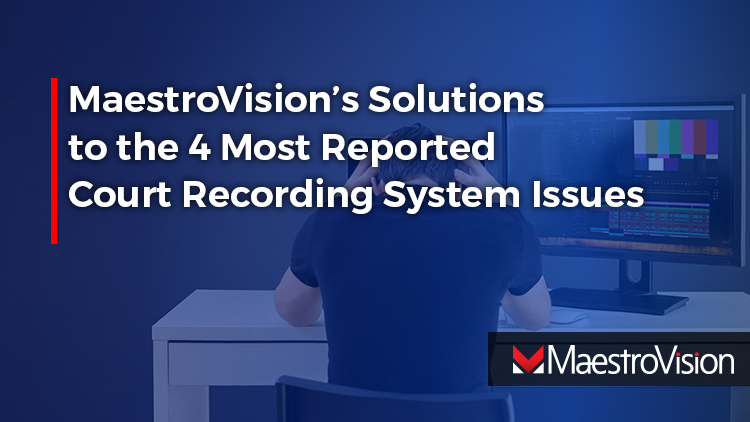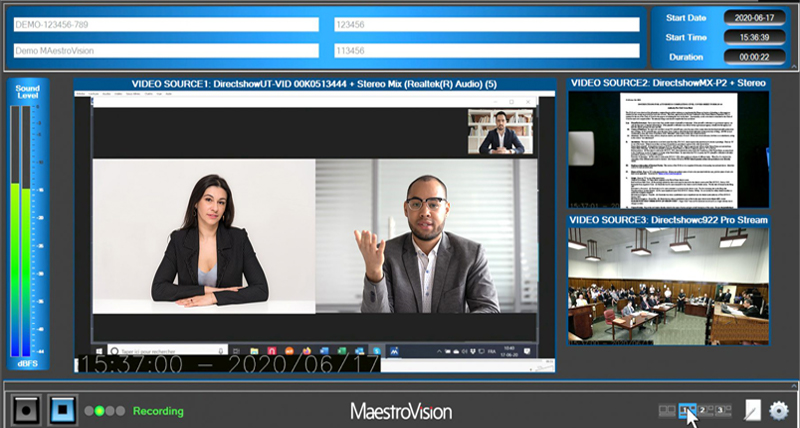MaestroVision’s Solutions to the 4 Most Reported Court Recording System Issues.
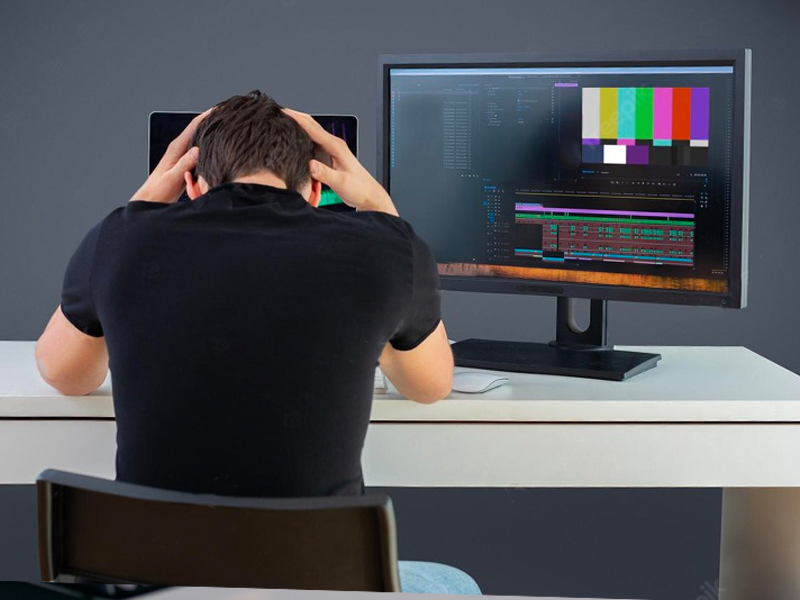
We asked multiple Court Clerks, Managers and Admins, what they dislike about their court recording system; here are their most common answers:
1. Software is hard to use – inability to find specific recordings or operate the system.
2. Sound issues
Disruptions, poor acoustics, inability to isolate audio tracks.
3. Unreliability
Recordings stopping suddenly or not recording at all.
4. Antiquated hardware
No longer under warranty and insufficient support.
As a court professional, the last thing you want to deal with are hiccups when it comes to dealing with your recording technology. At MaestroVision, our team of broadcast experts has spent dozens of years perfecting their craft at developing the highest quality recording systems on the market today. Here are our solutions to your common court recording pain points.
1. Problem: Software is hard to use.
Solution: MaestroVision’s Audio/Video Recording Software is easy to configure and simple to use.
With a customizable interface and metadata fields, MaestroVision’s audio and video recording software can display the buttons/features that are most important to you. Our integrated media library can index and search for any metadata keywords you utilize to organize your recordings. Additional time-saving features include: the ability to import your daily court docket, integrate a start/stop button and indicator light, add bookmarks and metadata information to index and search for specific recordings, ability to share recordings via a weblink, HTML link, mp4, and more. Training with our software takes little to no time as it’s developed to be as simple to use as web conferencing technology like Zoom.
2. Problem: Sound issues – background noise, interference.
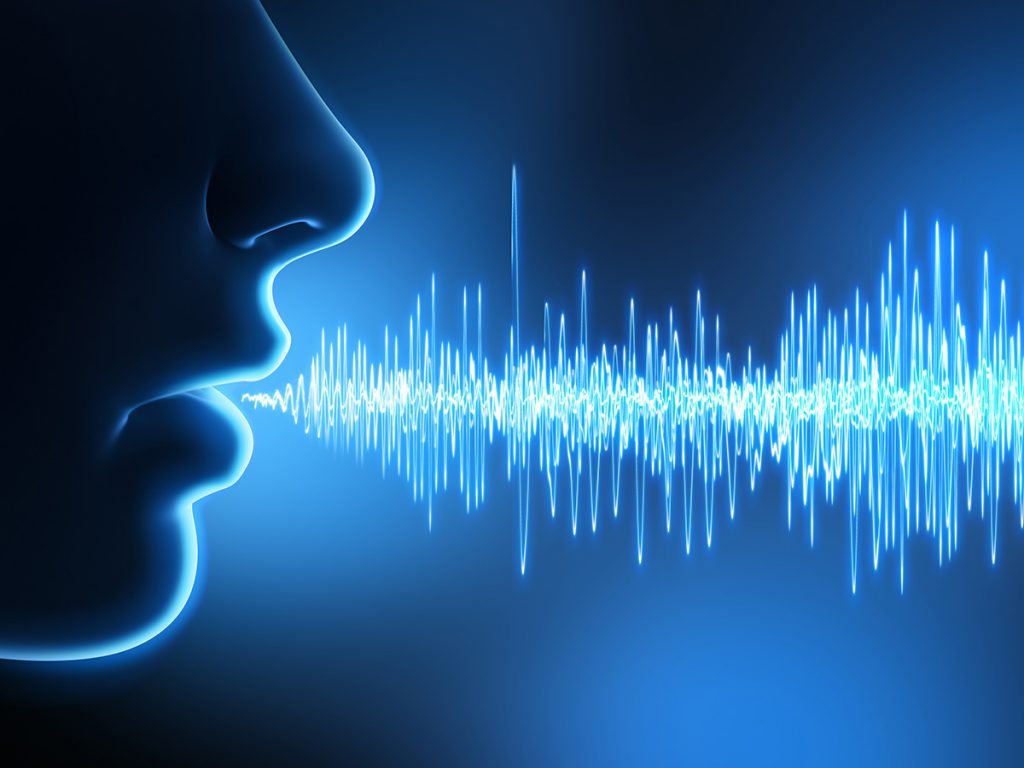
Solution: MaestroVision’s solutions incorporate ASIO and DANTE technology as well as balanced audio connection/microphones.
MaestroVision’s audio application, KEYSERV AUDIO is ASIO compatible. ASIO uses digital multi-track technology, which is a separate recording of multiple sound sources that allows users to isolate the sound from a single microphone and record it on a single track. A singular achievement that guarantees optimal recording quality every time!
In the music industry, this technology was developed to allow studio engineers to record all the instruments and vocals for a piece of music separately. Before, all singers and musicians in a band had to sing and play together. Recordings were done on one track and could not be isolated. If a musician played a part wrong, the recording had to be redone entirely.
Now, each component is recorded separately and can be edited on its own. Engineers can adjust the levels and tones of each individual track, and if necessary, redo certain tracks to get a better take.
Another way to ensure that audio tracks are isolated is to install a Digital Signal Processor (DSP) using a proprietary network called DANTE (Digital Audio Network through Ethernet). We propose a solution where audio capturing is achieved using multiple microphones connected to a DSP. The DSP will process the audio from the microphones in real-time, and then send it to the recording computer using the DANTE network. This way, it will be possible to isolate each audio track during replay. The advantage of a DANTE system is the fact it is a standalone component that doesn’t require a windows driver and it can be configured remotely from your Hall of Justice administration.
3. Problem: Unreliability – recordings stopping suddenly or not recording at all
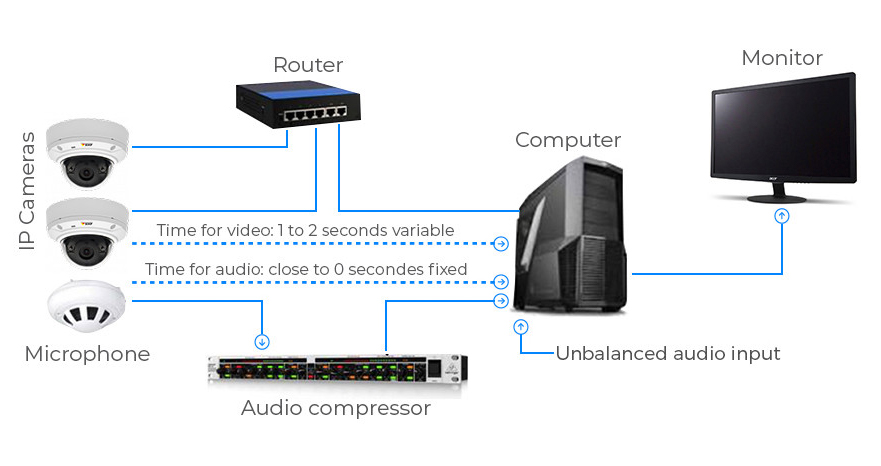
Solution: MaestroVision’s solutions utilize broadcast standard equipment.
Many courts are utilizing providers that offer surveillance systems with IP cameras. IP cameras are best suited for surveillance but are ineffective for start/stop recordings. Our solutions provide perfect synchronization of audio with video, using HD-SDI (High Definition-Serial Digital Interface) technology.
We don’t offer systems with IP cameras because it’s not possible for an IP camera to offer a perfect synchronization of the audio with the video.
As we can see in the figure above, in an installation with IP cameras, the cameras are connected to the network. The video is not sent in real-time to the computer for capture, but rather in packets which are then decoded by the software in the computer. This transmission takes from one to two seconds and varies depending on whether the network is busy or not. The audio signal is transmitted in real-time, with no variation to the computer. Its transmission time is practically zero seconds. Resellers of IP solutions can put a delay to the audio signal to synchronize with the video, but as video transport does not take place in real-time and depends on the network, the transmission of the video is always variable so impossible to be synchronized with the audio.
4. Problem: Antiquated hardware no longer under warranty and insufficient support.
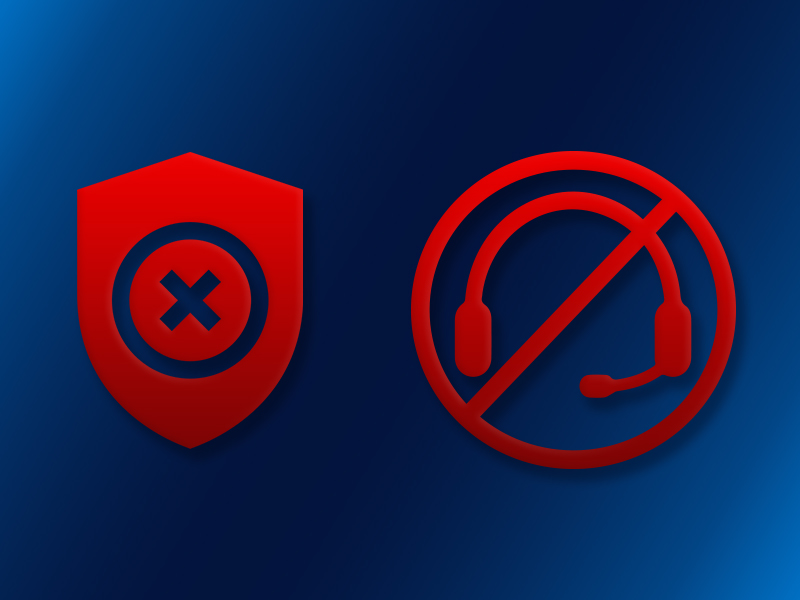
Solution: MaestroVision offers an extended warranty that never expires, 24/hour support and hardware replacements.
Most other court recording providers offer a 5-year warranty on hardware on their software and a brief window for hardware support (if any at all). This leaves many courthouses with no choice but to ditch their system and set out on a search for an entirely new one. This leaves courts in the unfortunate position of having to courts have to continue using the system with issues if they don’t yet have the funds. This is why MaestroVision offers a lifetime warranty and 24-hour support on all of their systems. The warranty covers software updates, hardware replacements and more. You can read more about it by visiting our warranty page.

